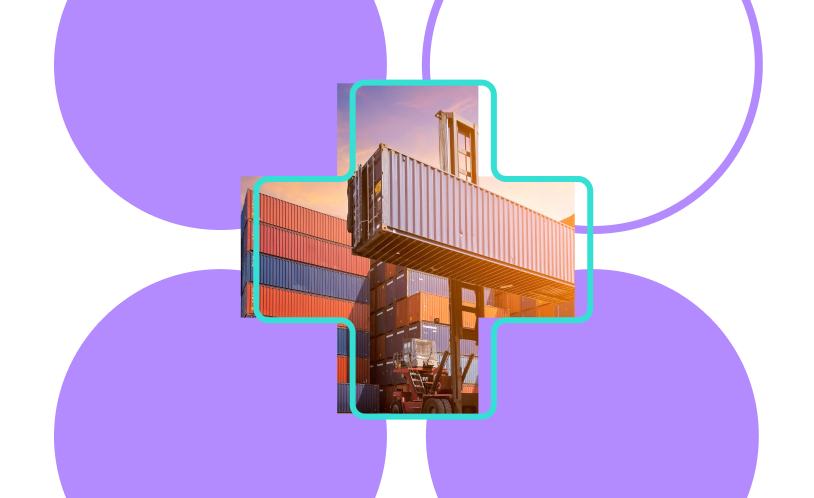Key Freight Documents For International Shipping
When it comes to shipping stuff around, you’d be surprised at the amount of paperwork involved – we’re talking over a hundred different documents! But- most of these papers are specialized for specific cargo situations. So, unless you’re shipping something super fancy, you won’t need to wrestle with the whole pile.
All these documents are like the secret sauce that keeps the shipping world running smoothly. They make sure your stuff goes from point A to point B without any hiccups, all while staying on the right side of the law. So, even though it might seem like a paperwork jungle out there, it’s really all about making sure everything gets where it needs to go hassle-free.
Nine Key Freight Documents
There are over 100 documents that play a role in freight shipping.
Fortunately, most of them only apply to specialized cargo.
So unless you are importing vicuña fiber from Peru, there are only nine key freight documents that you need to know. Select any document to be directed to a plain English guide designed to keep you (and your cargo) moving.
- Shipping Quote
- Commercial Invoice
- Certificate of Origin
- Material Safety Data Sheet
- Shipper’s Letter of Instruction
- Booking Confirmation
- Bill of Lading/Air Waybill
- Packing List
- Letter of Credit
What Are Freight Shipping Documents
Freight shipping documents are essential paperwork used in the transportation of goods, whether domestically or internationally. They serve as a crucial part of the logistics process, facilitating the movement of cargo while ensuring compliance with customs regulations and international trade laws. When dealing with international shipping, platforms like Freightos.com can help streamline the documentation process.
Why Do I Need Freight Shipping Documents
Shipping documents are essential for international shipping due to several key reasons:
- Customs Clearance: Providing vital information for customs authorities to assess duties, taxes, and ensure compliance with local regulations.
- Security and Safety: Shipping documents help identify potentially hazardous or illegal items, ensuring security and safety in international trade.
- Trade Regulations: Demonstrate compliance with varying trade regulations and restrictions in different countries.
- Ownership and Control: Shipping documents establish ownership and control of cargo, vital for legal and financial purposes.
- Risk Management: Aid in managing shipping risks, such as insurance coverage and loss or damage during transit.
- Logistics and Tracking: Shipping documents contain routing, handling, and packaging details, enabling correct cargo handling.
- Payment and Settlement: Used for calculating charges, duties, taxes, invoicing, and settling payments.
Countries may require specific documents based on factors like goods type, destination, and trade agreements. Common documents include commercial invoices, bills of lading, packing lists, certificates of origin, licenses, and insurance certificates. Shipping documents are vital to ensure smooth international trade and regulatory compliance.
Different Documents For Ocean, Sea & Air Freight
Different modes of shipping, such as ocean (sea) and air freight, require specific documents due to their unique characteristics and regulatory needs.
Ocean (Sea) Freight Documents:
- Bill of Lading (B/L): Essential for sea freight, it acts as a receipt, contract, and title document.
- Packing List: This document contains complete freight details as mentioned in the commercial invoice, including the method of freight packaging, handling details, and other specifications relating to the shipped goods.
- Commercial Invoice: Contains goods info, value, and terms for customs and tax purposes.
- Certificate of Origin: Required for determining goods’ source or trade agreements.
- Insurance Certificate: Provides cargo insurance details.
Air Freight Documents:
- Air Waybill (AWB): Equivalent to the B/L for air freight, serving various purposes.
- Commercial Invoice: As in ocean freight, it lists goods, value, and terms.
- Packing List: Helps with cargo handling and customs.
- Certificate of Origin: This may be needed to establish the goods’ source.
- Insurance Certificate: Offers proof of cargo insurance coverage.
The specific requirements may vary by country and goods type. Compliance ensures smooth shipping.
For further details on ocean freight, refer to Freightos.com’s Ocean Freight Explained.
What Documents Do I Need For Freight Forwarding
When using a freight forwarder, whether through Freightos.com or traditional means, you’ll typically need to provide these essential documents:
- Commercial Invoice: Details about the goods, including value and quantity.
- Packing List: Inventory of cargo with weight and dimensions.
- Bill of Lading (B/L) or Air Waybill (AWB): Proof of ownership and transport contract.
- Certificate of Origin: Confirms the goods’ source.
- Insurance Certificate: Proof of cargo insurance.
- Booking Confirmation: For sea freight, it confirms space reservations.
- Shipper’s Letter of Instruction (SLI): Specific handling and routing instructions.
Online platforms like Freightos.com streamline document management but still require these documents. For top freight forwarder options, check Freightos.com’s Top Freight Forwarders.



